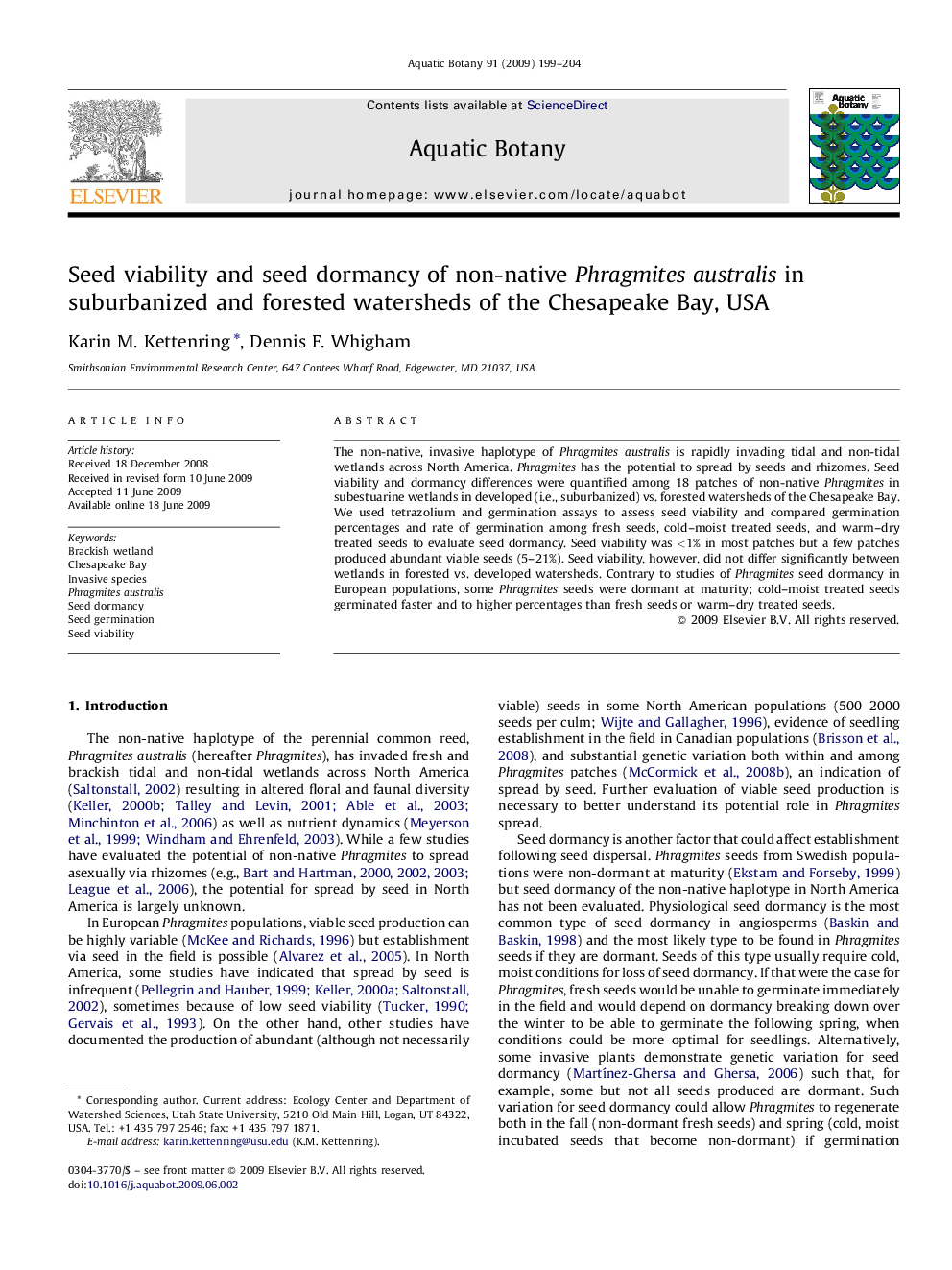| Article ID | Journal | Published Year | Pages | File Type |
|---|---|---|---|---|
| 4528268 | Aquatic Botany | 2009 | 6 Pages |
The non-native, invasive haplotype of Phragmites australis is rapidly invading tidal and non-tidal wetlands across North America. Phragmites has the potential to spread by seeds and rhizomes. Seed viability and dormancy differences were quantified among 18 patches of non-native Phragmites in subestuarine wetlands in developed (i.e., suburbanized) vs. forested watersheds of the Chesapeake Bay. We used tetrazolium and germination assays to assess seed viability and compared germination percentages and rate of germination among fresh seeds, cold–moist treated seeds, and warm–dry treated seeds to evaluate seed dormancy. Seed viability was <1% in most patches but a few patches produced abundant viable seeds (5–21%). Seed viability, however, did not differ significantly between wetlands in forested vs. developed watersheds. Contrary to studies of Phragmites seed dormancy in European populations, some Phragmites seeds were dormant at maturity; cold–moist treated seeds germinated faster and to higher percentages than fresh seeds or warm–dry treated seeds.
